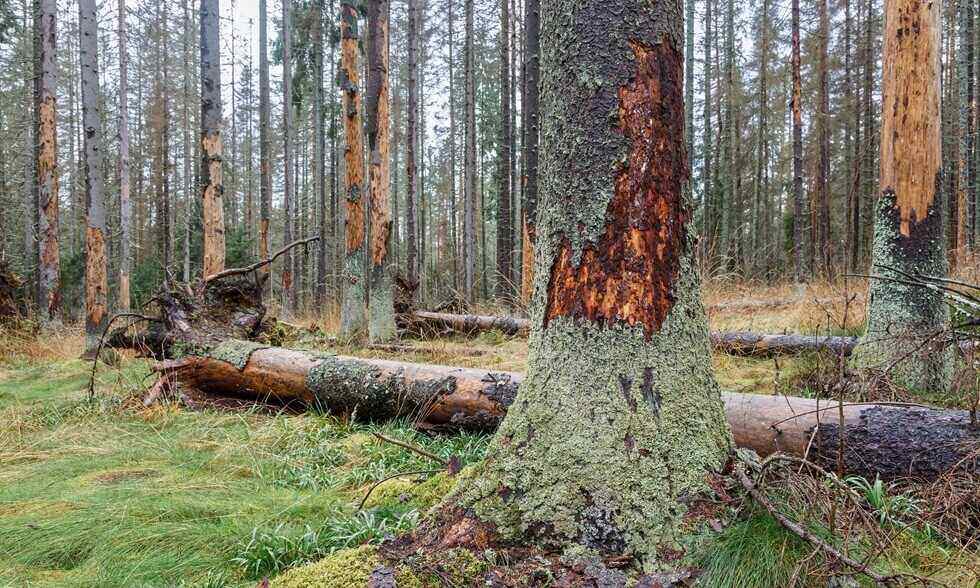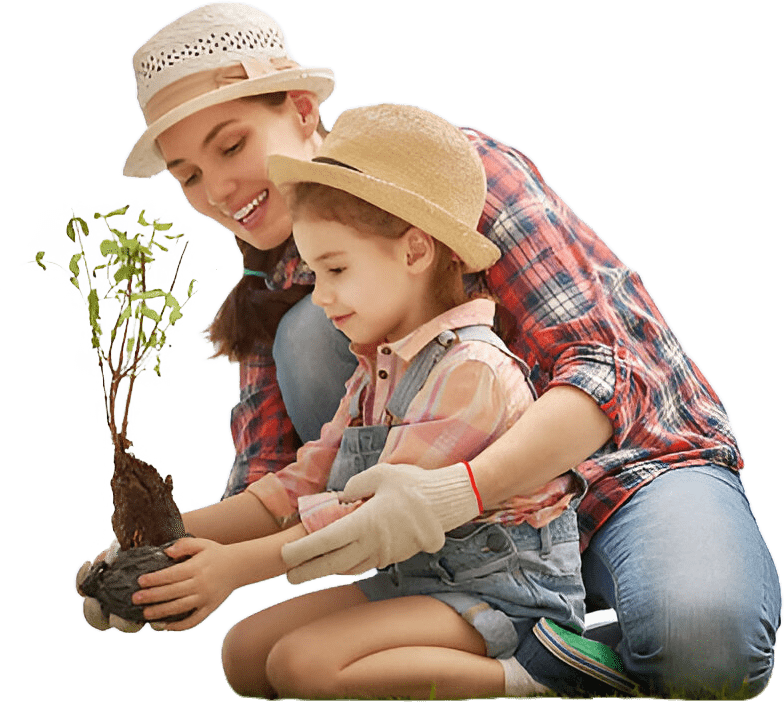One bad season can cause trees to rapidly decline in health, but this affects more than the individual plants. Trees are the cornerstone of healthy landscapes, providing shade, nutrients, and beauty to the surrounding ecosystem. Homeowners hoping to increase their property’s value with beautiful trees may be disappointed to notice bad growth due to age, disease, instability, or unknown causes.
Though dying trees can quickly become a liability, many homeowners have difficulty determining whether a tree will bounce back with time or if it poses a safety risk to the grounds, the other plants, and even the home. Experienced tree care specialists prioritize preservation when possible, but at times, safe and strategic tree removal is the best option for the property.
These six signs can help homeowners identify when it’s time to remove a tree, but an inspection by a plant care expert remains the best way to examine a property’s plant health.

1. Visible Decay or Disease
Compromised trees eventually show visible signs of decay or disease. Once these signs are noticeable, it’s often too late to help the tree. They include cavities in the trunk, sparse or dead limbs, and cracked or leaking bark, which can fall off in large chunks due to advanced decay.
Trees that lose trunk mass, develop holes, or lose whole branches are likely afflicted with a disease too advanced to treat. Noticing these signs early can make a difference, but tree removal may be necessary in many cases to preserve the health of the landscape.
2. Fungal Growths
Fungal growths on the trunk or at the base of the tree, especially shelf fungus or conks, signal that the tree is likely dying. Shelf fungus, which is a broad, flat mushroom that grows out of tree trunks, begins growing inside the trunk or at the base when the tree begins decaying.
Once the shelf fungus becomes visible, it often means that the decay is too severe to save the tree. The parasitic fungal growths will eventually kill the remaining tree growths and spread if not removed.
3. Structural Changes
A tree with a uniform, healthy growing structure can withstand environmental changes and natural stressors like wind and rain. However, compromised limbs or trunks may become damaged and continue to grow in an unhealthy way. This can happen when a storm breaks a large limb or splits the trunk.
In addition to this visible damage, homeowners may observe the tree heal in a structurally unsound way. They may notice the tree leaning or growing multiple trunks with weak attachments, also known as co-dominant stems. These trees are at a greater risk of falling in the event of another storm. Depending on their proximity to the house, other plants, or people and animals on the property, these structural weaknesses may warrant tree removal.
4. Proximity to Structures
If a tree grows too close to a structure or utility, removing it may be the best option. In some cases, the tree may be perfectly healthy, but a structure or utility is built too close the tree, leaving the homeowner no choice but to remove it for safety reasons. Vulnerable structures include:
- Power lines, gutters, and roofs, which can be damaged by branches
- Gardens or other plants, which can become shaded, mildewed, or damaged by tree growth
- Foundations, septic systems, and driveways, which can be damaged by invasive roots
- Walkways, porches, or other structures where people could be injured
The tree’s trunk and branches are not the only cause for concern. As trees grow, their roots seek new sources of water, which can damage underground utilities, sidewalks, and foundations. Keeping the property, plants, animals, structures, and people safe sometimes requires removing trees, even healthy ones.
5. Visible Roots
Not all visible roots are a cause for alarm. However, uprooting after a storm or flood can cause a tree to grow unstable. Homeowners may notice leaning, ground erosion, exposed roots, or disturbed soil. This is often a sign that the tree is collapsing or in danger of collapse, in which case, tree removal is likely the safest option.
6. Overcrowding
As trees grow and compete for nutrients, they can crowd other plants, encroach on structures, or block a valuable view. Overcrowding can reduce the health of the trees or simply be inconvenient for those trying to enjoy the property, warranting removal.

Partner with RTEC Treecare to Spot Signs of Decay and Keep Your Landscape Healthy
The signs that a tree is too unhealthy, diseased, or dangerous to be left alone may not always be obvious to the untrained eye. At RTEC Treecare, our certified arborists have expert knowledge and proven processes in tree care, and our goal is to help owners safeguard the health and value of their properties with customized tree and root care plans.
We take a sustainability-focused approach that prioritizes preservation. However, in some cases, landscape sustainability can only be achieved through careful tree removal. Contact our team of experts today to learn how our environmentally-conscious landscape management strategies can protect the health and value of your property. Our inspectors can spot the signs of decay early to prevent the need for tree removal if possible.


